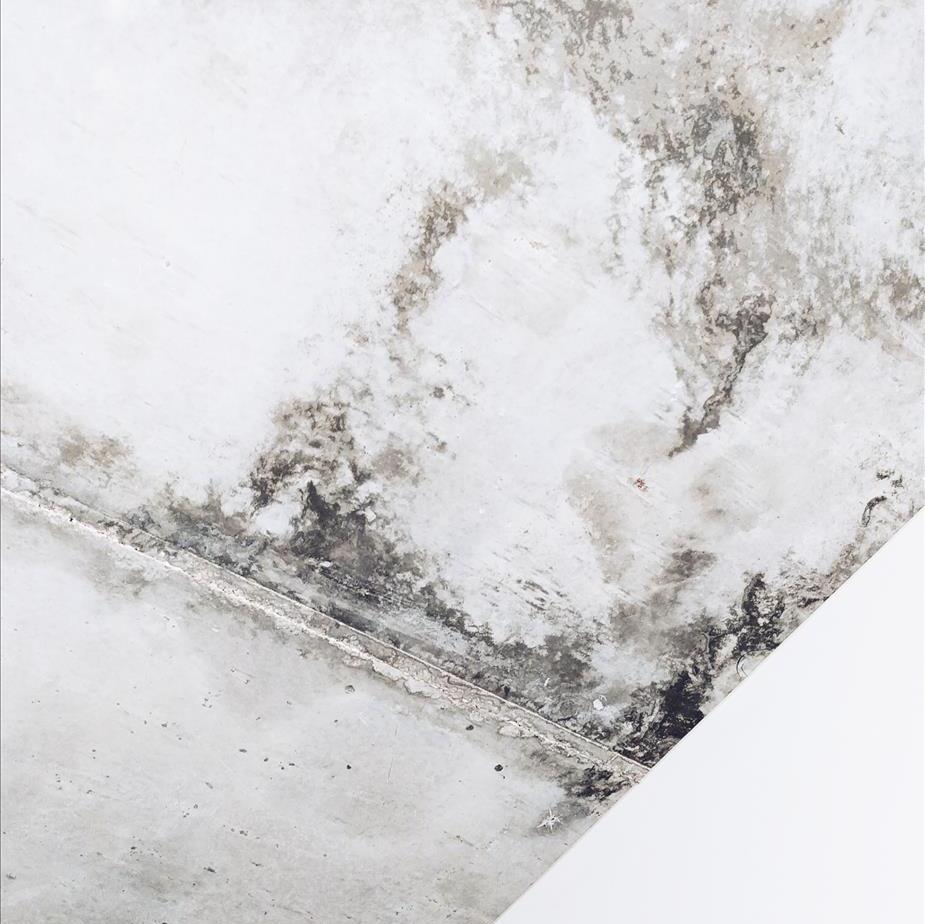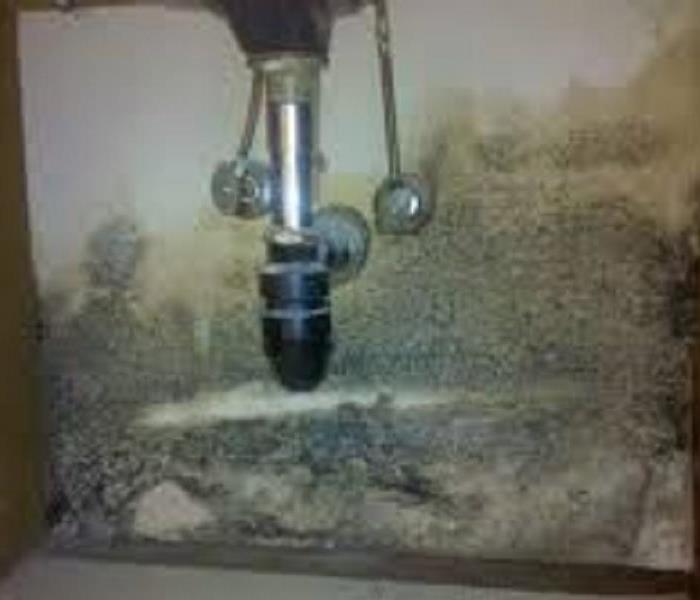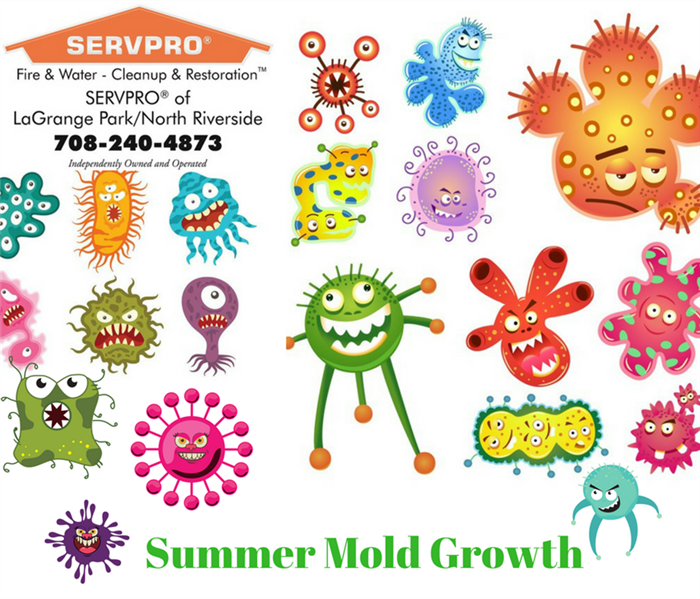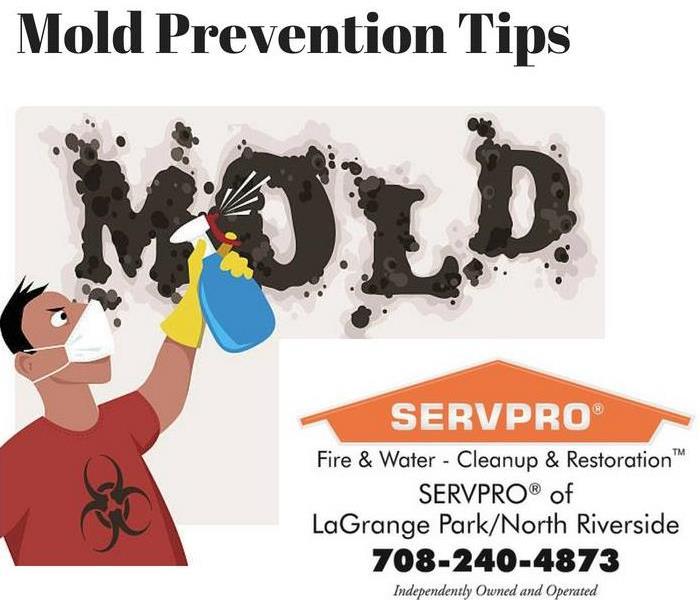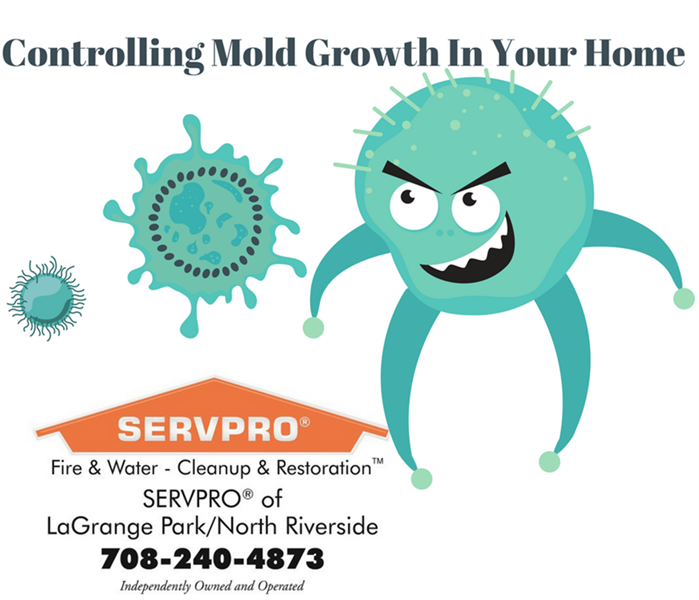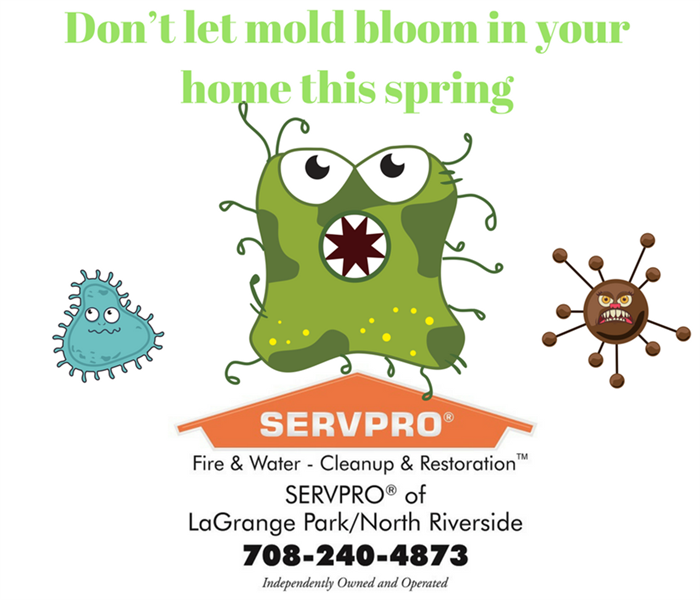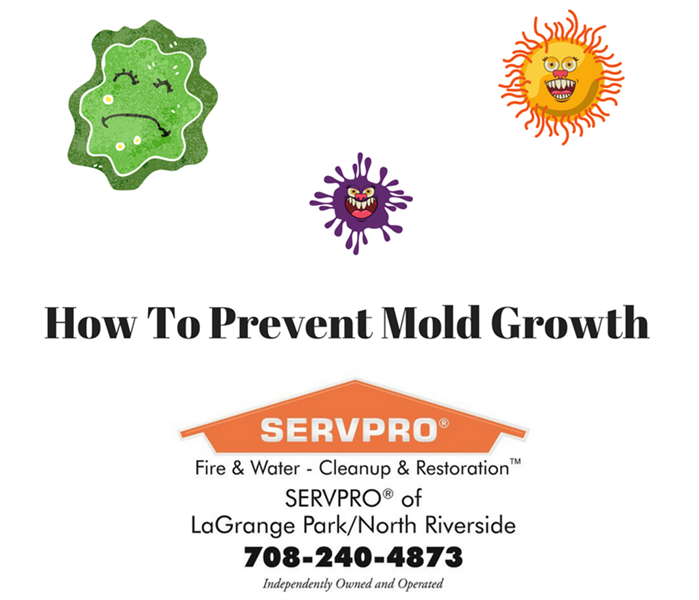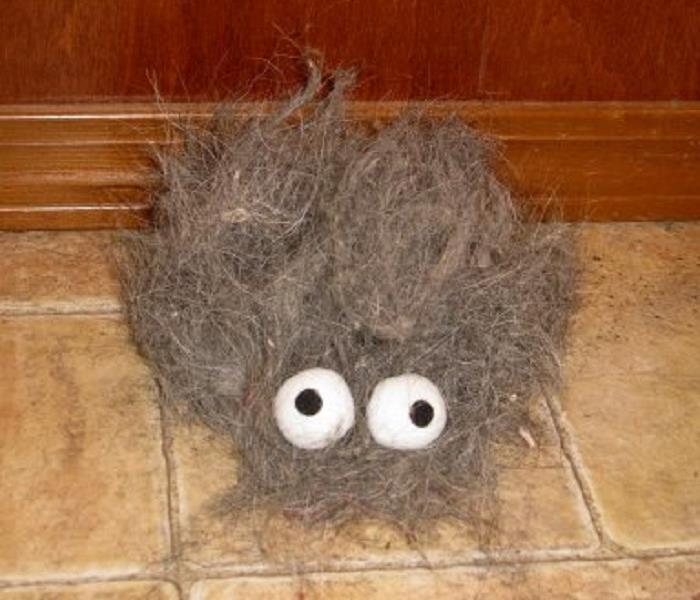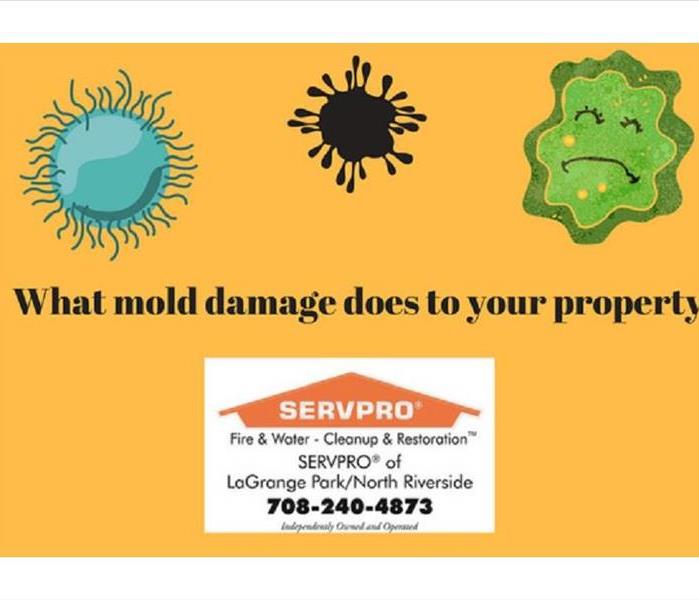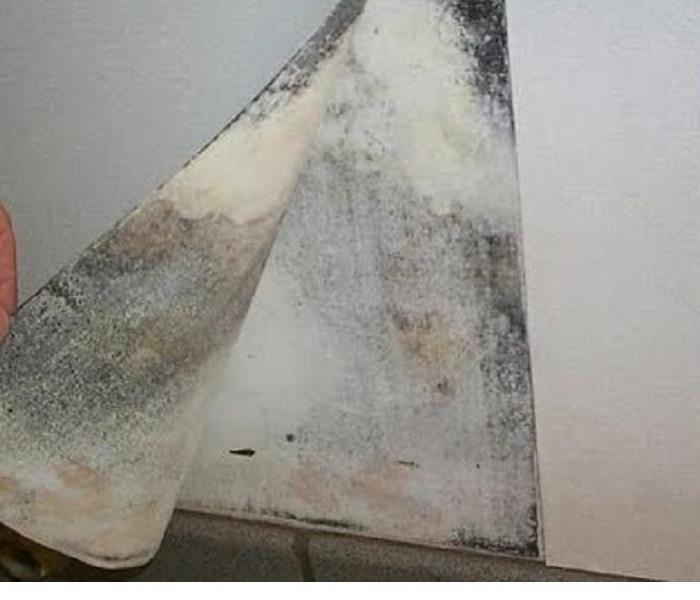Recent Mold Remediation Posts
Guide to Mold Control
9/21/2023 (Permalink)
According to the Healthy Indoor Air Research Center at the University of Illinois, mold spores are ubiquitous and can grow on any organic surface if the right conditions are present. These conditions include organic matter for food, moisture, warmth, and oxygen. To prevent mold growth, it is important to keep all surfaces clean and dry, as well as ensure adequate ventilation.
Moisture is a key factor for mold growth, so it is essential to address any sources of moisture such as flooding, leaky pipes or windows. Areas with excess moisture like bathrooms, kitchens, and laundry rooms are particularly prone to mold growth.
Mold spores also require a source of food, which can include various materials found in the environment.
Optimum temperatures for mold growth range between 32 and 120 degrees Fahrenheit, with temperatures around 70-90 degrees being the most conducive for mold proliferation.
Author Michael Pugliese, in his book "The Homeowner's Guide to Mold," highlights three conditions that favor mold growth: a relative humidity of around 50% or higher (which can be monitored using a hygrometer), damp or dusty conditions (avoiding the accumulation of mold food sources like piles of rags or clothing), and stagnant air. It's worth noting that tightly sealed homes designed for energy efficiency can sometimes experience mold issues due to a lack of adequate air circulation.
If you discover mold in your home, it is recommended to contact SERVPRO of LaGrange Park/North Riverside at 708-240-4873 for assistance.
Mold Control After a flood:
3/23/2022 (Permalink)
Understanding the dangerous of mold build-up not only to your home but to your loved ones as well can help prevent a tragedy. Mold grows in high moister areas which are typically warm and dark. Mold loves to attach to paper, cardboard, and wood but can travel and survive almost anywhere in your home. This can be particularly dangerous because it can cause health effects.
The best way to protect yourself and your loved ones is prevention so that mold doesn’t grow by means of Fixing plumbing, keeping humidity levels low, and allowing air to flow freely throughout your home. But since this blog is about mold control after a flood, we’ll discuss measures of flood and mold cleanup.
The first step is acting quickly to clean and dry out and water in your home. The longer the moister sits the more damage it can cause. Start with eliminating the floodwater, fixing and leaks or plumbing so that moister and isn’t allowed to rebuild and removing and carpets or hard to dry items. Lowering humidity and increasing your home’s airflow are sure ways to dry up moister and prevent mold. Air fans and dehumidifiers are great for lessening moister for home after a flood. Lastly, clean your home with safe-to-use mold-killing products but be wary of products such as bleach and ammonia as the combination is known for harmful and deadly effects. For your peace of mind and to ensure your home is water damage and mold-free after a flood is sure to call your local SERVPRO of La Grange Park at (708) 240-4873 to be cleaned professionally.
Sources:
You Can Control Mold | CDC. (n.d.). Center for Disease Control and Prevention. https://www.cdc.gov/mold/control_mold.htm
Does Your Homeowners Insurance Cover Mold?
9/26/2019 (Permalink)
 Does homeowners insurance cover mold growth?
Does homeowners insurance cover mold growth?
Have you noticed fungus growth in your home in Westchester, IL, and wondered whether or not your homeowners policy covers it? The answer is: maybe. There are situations where mold may be covered and others where it isn’t. Here are some factors that may determine coverage and what you can do about it.
What Insurance Companies Typically Cover
There is generally no mold coverage clause in a typical homeowners insurance policy, which may vary from commercial property or renter’s policies. Insurance companies expect homeowners to maintain and upkeep their property and only assume risk for covered perils. Covered perils are situations outside of a homeowner's control that occur through no fault of the homeowner. These include things such as the following:
- Lightning
- Fire
- Frozen pipes
- Vandalism
- Overflow of water from household items
- Impacts from snow, ice, or sleet
Fungus growth occurring from one of these situations where the impacted area is restored immediately by mold remediation specialists may be covered under your policy.
What They Don’t Cover
If water has been standing unnoticed for several days or weeks causing fungus to grow, you may find you are not covered. Additionally, if mold is caused by water seepage in an area that should have been updated, repaired or maintained, then you may not be covered by insurance. These would be your responsibility as the homeowner.
What You Can Do About It
You may be able to obtain a mold insurance rider as an addendum to your current insurance policy. This may provide additional coverage that your existing homeowners policy doesn’t. However, the insurance company may put a cap on the costs they will incur, or they may say they will cover certain costs but not others.
Fungus growth is a worrisome issue. Insurance companies generally cover damage occurring as a result of perils outside the control of the homeowner. They often don’t cover anything that could be the homeowner's fault. You may want to consider additional coverage as an addendum to your current policy to mitigate the risk if you have any concerns.
Efficient Commercial Mold Testing
7/24/2019 (Permalink)
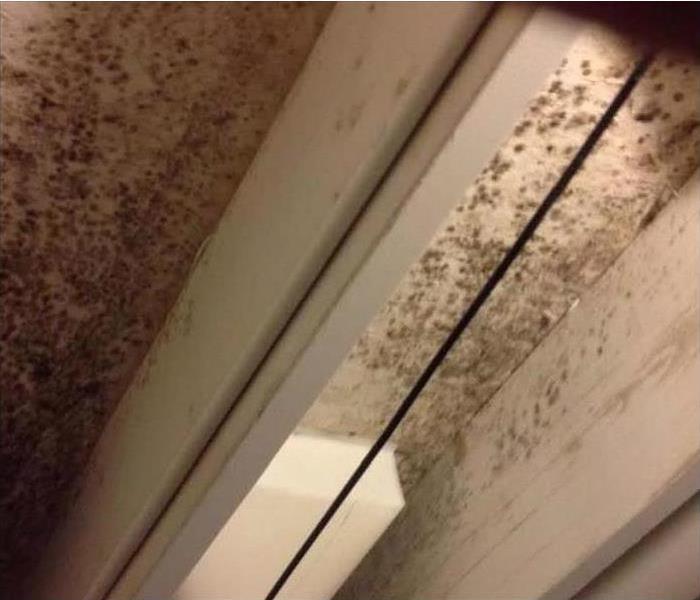 Mold on basement
Mold on basement
Your commercial building in Hillside, IL, needs quality indoor air. Whether you’re serving hundreds of customers daily or working in a small office with a few coworkers, air quality is important for the comfort and safety of everyone in the building. While some mold can be easily seen, other types of mold can affect your air quality and require an indoor environmental specialist to determine the presence of mold.
How To Test for Mold
Mold growth is typically easy to spot. Here are some common areas that mold may be growing in your commercial building:
- Bathroom grout and caulk
- Bathroom ceilings surrounding fans
- Closets
- Basements
However, not all mold is visible. Some mold can be growing deep in your HVAC ductwork, wall cavities or other areas that aren’t immediately visible. Hidden mold can have the same effect on your air quality, so consider hiring a professional indoor environmental specialist who will check the air quality and compare it to the air quality index.
Limits of Mold
The EPA hasn’t set any official limits on the amount of acceptable mold in an indoor environment. This means that there isn’t an official level to compare the presence of mold against. Any positive signs from a mold test should be treated seriously, so ask a specialist about any steps you can take to remove mold from your commercial building.
The Importance of Commercial Mold Test Specialists
Without a specialist, it’s difficult to determine the air quality of your business location. Discover how your air quality compares to other businesses, and ask about ways to improve your air quality to benefit your guests and employees. Look for a mold remediation company that is Here To Help.
Mold may be hiding in areas that you can’t see, but an indoor environmental specialist who is experienced with commercial buildings can help you accurately test your air quality and determine the best course of action for your business.
Mold Damage and Rental Insurance: What’s Covered?
5/29/2019 (Permalink)
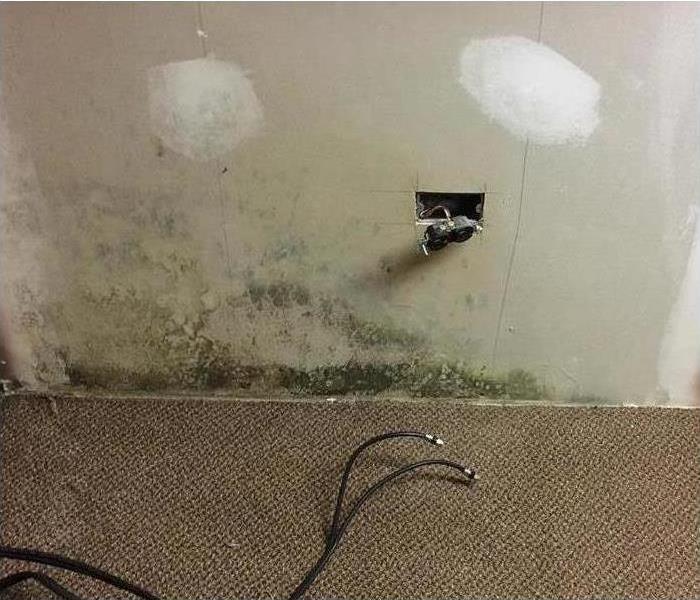 Mold found in a Westchester, IL home
Mold found in a Westchester, IL home
If you have found mold in an apartment or home you are renting in Westchester, IL, it is possible that mold has spread to your personal belongings and caused damage. While the costs of hiring a mold remediation specialist to address the mold issue and making repairs to prevent mold growth is most often your landlord’s obligation, you likely will be responsible for repairing or replacing your affected belongings. If you have a rental insurance policy, there are several situations where you might be covered.
When Will Renters Insurance Cover Mold Damage?
In general, costs associated with mold removal and remediation that you are liable for will be covered by rental insurance if the mold damage is caused by a covered peril. Some common covered perils include:
- Fire and lightning
- Falling objects
- Damage caused by plumbing, heating, or air conditioning freezing or overflow
- Freezing pipes
- Damage from the weight of ice, snow, or sleet
Who Is Liable for Mold Problems?
It is important to remember that both tenants and landlords have a part to play in keeping a rental free from mold. As a renter, it is your responsibility to keep the property clean and do what you can to prevent mold from growing. You are required to tell the landlord about issues that can cause mold growth, such as a leak or malfunctioning HVAC system. You also need to alert them of any mold you find in the home immediately. It is the landlord’s responsibility to quickly make repairs and address mold issues right away to prevent damage, but they are not responsible for replacing your damaged belongings.
The damage mold causes can be very costly to address. While finding mold in a home you are renting can be very stressful, it is important to remember that your rental insurance policy will cover any of your affected belongings if they are the result of a covered peril.
Follow These Mold Safety Advice If You Live in LaGrange Park
3/27/2019 (Permalink)
If you see visible mold, do not disturb it. You can inadvertently spread the mold infestation throughout your home. When mold is disturbed, the mold can release microscopic mold spores which become airborne and can circulate inside your home.
What to Do:
What Not to Do:
- Don’t touch or disturb the mold.
- Don’t blow air across any surfaces with visible or suspected mold growth.
- Don’t attempt to dry the area yourself.
- Don’t spray bleach or other disinfectants on the mold.
About Our Mold Remediation Services
SERVPRO of LaGrange Park/North Riverside specializes in mold cleanup and restoration, in fact, it’s a cornerstone of our business. Our crews are highly trained restoration professionals that use specialized equipment and techniques to properly remediate your mold problem quickly and safely.
If You See Signs of Mold, Call Us Today – 708-240-4873.
Three Things You Should Know About Mold in Your Home
3/18/2019 (Permalink)
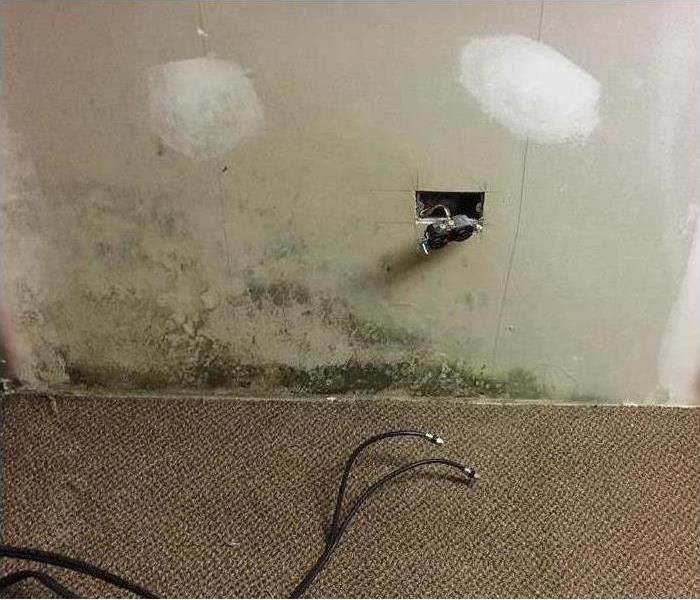 If you have high humidity levels in your home, mold can spread rapidly, sometimes in only a day or two.
If you have high humidity levels in your home, mold can spread rapidly, sometimes in only a day or two.
Three Things You Should Know About Mold In Your Home
For many homeowners, mold growth can be a significant problem. Many things can contribute to the development of this fungus inside of your Riverside, IL home, especially if you do not perform regular maintenance on your house. Here are a few things that you might need to know if you discover mold in your home.
1. There Are Many Types of Mold That Can Grow In Your Home
When you think about mold growth in your home, you are likely thinking about black mold. However, this is not the only type of fungus that you can find there. Black mold is only one of several varieties. While not all types of mold are necessarily harmful, they can all cause damage to your home, so it is best to have it remediated as soon as possible.
2. It Spreads and Grows Quickly
Particularly if you have high humidity levels in your home, mold can spread rapidly, sometimes in only a day or two. Because of this, it is essential that you do not ignore any signs of a growth. Even if you cannot see any mold, you might be able to smell it. If you have a musty odor in your house and you cannot locate the source, mold is likely the culprit.
3. It Is Not as Easy To Remove as You Might Think
Even if you have removed all of the visual mold from your home, it is possible that it is present inside of your house’s structure. If you see any damage, it is best to have a mold remediation service examine your house and remove the mold. Having this done by professionals will make it less likely that the growth will return. They can also locate any sources of water damage that might contribute to the problem.
While having a mold growth in your home may seem like more of an annoyance than an emergency, you should always treat it as soon as possible to avoid extensive damage.
What Causes Mold To Grow In Your Home
8/8/2018 (Permalink)
Mold spores need three things to grow into mold: nutrients, cellulose (the cell wall of green plants) is a common food for indoor spores, and moisture. To begin the decaying process caused by mold; time -mold growth begins from 24 hours to 10 days after the provision of growing conditions.
Molds are found everywhere, and can grow on almost any substance when moisture is present. They reproduce by spores, which are carried by air currents. When spores land on a moist surface suitable for life, they begin to grow.
Common building materials are capable of sustaining mold growth. Mold growth in an indoor environment is typically related to water or moisture and may be caused by incomplete drying of flooring materials. Flooding, leaky roofs, building-maintenance or indoor-plumbing problems can lead to interior mold growth. Water vapor commonly condenses on surfaces cooler than the moisture-laden air, enabling mold to flourish. This moisture vapor passes through walls and ceilings, typically condensing during the winter in climates with a long heating season. Floors over crawl spaces and basements, without vapor barriers or with dirt floors, are mold-prone.
Significant mold growth requires moisture and food sources and a substrate capable of sustaining growth. Common building materials, such as plywood, drywall, furring strips, carpets, and carpet padding provide food for mold. In carpet, invisible dust and cellulose are food sources. After water damage to a building, mold grows in walls and then becomes dormant until subsequent high humidity; suitable conditions reactivate mold. Mycotoxin levels are higher in buildings which have had a water incident.
If you suspect, that you have mold growing in your home or business, Call SERVPRO of LaGrange Park/North Riverside today at 708-240-4873. We will help you make it “Like it never even happened.”
Summer humidity spreading mold
7/11/2018 (Permalink)
In general, mold grows well within the same temperature range that makes us feel comfortable, about 60 to 80 degrees. When warm, moist air comes into contact with cold surfaces, it can create condensation, since the cooler air can't hold as much moisture. Sometimes, humidity or dampness, or water vapor in the air can supply enough moisture for mold growth. Indoor relative humidity should be kept below 60 percent. Ideally humidity should be kept between 30 percent and 50 percent, if possible.
In the summer, air conditioning can de-humidify indoor space. However, if the system is too large or too small for the space it serves, the cooling system can create high humidity by cooling without removing water vapor. A properly sized and maintained system will dehumidify and cool a building. Learn more about the role of heating, ventilation and air conditioning HVAC systems in indoor environmental quality.
When there are cold surfaces in a building, water vapor can condense on those surfaces, just as water condenses on the outside of a glass of ice water. Insulation of exterior walls can prevent condensation and mold growth during the winter.
You should always be mindful of indoor sources of water vapor that can be problematic. Clothes dryers must be vented to the outdoors. Unvented gas or kerosene space heaters can generate enormous amounts of water vapor, as well as other air contaminants, and should be used sparingly and never as a primary heat source. Always run the bathroom exhaust fan when showering or bathing, and make sure the vent is exhausted to outdoors. A properly vented kitchen exhaust fan can remove steam created during cooking.
If you find you have mold growth in your home give SERVPRO of LaGrange Park/North Riverside a call at 708-240-4873. We will make it “Like it never even happened.”
Mold Prevention
6/22/2018 (Permalink)
The key to mold prevention is simple: moisture control. You can't mold-proof your home, but you can make it mold-resistant.
Identify problem areas in your home and correct them. - See water spots in the ceiling and walls? There is water coming from somewhere. Find the sorce and stop it.
Dry wet areas immediately. Mold can't grow without moisture, so tackle wet areas right away. Seepage into the basement after a heavy rainfall, accumulation from a leaky pipe, even a spill on the carpet should be dried within 24 to 48 hours
Direct water away from your home. If the ground around your home isn't sufficiently sloped away from the foundation, water may collect there and seep into your crawlspace or basement.
Improve air flow in your home. According to the EPA, as temperatures drop, the air is able to hold less moisture. To increase circulation, open doors between rooms, move furniture away from walls, and open doors to closets that may be colder than the rooms they’re in. Let fresh air in to reduce moisture.
Again, mold proofing your home is not achievable. However, following these few steps will help make it mold resistant. However, as we know, even our best efforts sometimes do not hinder mold growth, and that is where SERVPRO of LaGrange Park/North Riverside comes in handy. We are IICRC certified in mold remediation and will help make your home or business look “Like it never even happened.” Give SERVPRO of LaGrange Park/North Riverside a call at 708-240-4873.
How To Control Mold Growth In Your Home
5/7/2018 (Permalink)
Indoor air quality matters a lot to our health, the Environmental Protection Agency estimates that we spend 90 percent of our time indoors, and that the air we breathe indoors is more polluted than the outdoor air.
There is no need to take a wrecking ball to the entire house at the sight of a little mold. Focus your mold removal and mold remediation efforts on the area where the water and mold growth is occurring by removing the mold at its source and eliminating the water source.
You can control mold by doing the following in your home: controlling humidity levels; promptly fixing leaky roofs, windows, and pipes; thoroughly cleaning and drying after flooding; ventilating shower, laundry, and cooking areas. Controlling the humidity levels, by keeping the levels low- no higher than 50%–all day long. An air conditioner or dehumidifier will help you keep the level low. Fixing leaky roofs, pipes, and windows and completely drying out any wet materials will prohibit mold growth in your home. Having a ventilation fan in the bathroom, cooking areas, and laundry rooms will cut down on the moisture levels which allow mold to grow.
If you suspect that you have mold in your home, give SERVPRO of LaGrange Park/North Riverside a call at 708-240-4873. We will send our trained professionals to your home to remove the mold, and help you feel comfortable in your home again.
Controlling Mold Growth Indoors During Spring Cleaning
4/4/2018 (Permalink)
With the spring season’s warming weather we often open up our windows and take on the task of spring cleaning. The key to mold control is moisture control, people might not think to check for excess moisture that could lead to mold growth and take steps to prevent mold from becoming a problem in the home.
There are molds that can grow on wood, carpet and insulation. Mold growth will often occur when excessive moisture accumulates in buildings or on building materials. Molds are everywhere in the environment and can grow on virtually any organic substance where moisture and oxygen are present. If the moisture problem remains undiscovered it can affect your home’s indoor air quality and the health of people sensitive to mold. Potential health effects and symptoms associated with mold exposure include allergic reactions, asthma, and other respiratory complaints.
The EPA has listed several steps to control the mold in your home.
- Clean and repair roof gutters regularly.
- Make sure the ground slopes away from the building foundation, so that water does not enter or collect around the foundation.
- Identify and fix plumbing leaks and other water problems immediately.
- If you see condensation or moisture collecting on windows, walls or pipes dry the wet surface and reduce the moisture/water source.
- When water leaks or spills occur indoors. If wet or damp materials or areas are dried 24 to 48 hours after a leak or spill, in many cases, mold will not grow.
- Scrub any visible mold off hard surfaces with detergent and water and dry the area completely.
- Keep air conditioning drip pans clean and the drain lines unobstructed and flowing properly.
- Keep indoor humidity low. If possible, keep indoor humidity below 60 percent ideally between 30 and 50 percent — relative humidity. Relative humidity can be measured with a moisture or humidity meter, a small, inexpensive instrument available at many hardware stores.
Mold is a serious concern not just in the spring, but all seasons of the year. If you believe that you have mold in your home, give SERVPRO of LaGrange Park/North Riverside today at 708-240-4873.
Don't Let Mold Bloom In Your Home This Spring
3/26/2018 (Permalink)
First, let’s discuss, what is mold? According to the EPA, “Mold is a family of fungi and mold spores are everywhere, both indoors and outdoors. There are many thousands of varieties and we are exposed to them all the time, typically without incident. Mold spores feed on or break down organic substances.”
There are four factors that need to be present for mold growth to begin: mold spores, moisture, temperatures to promote growth, and a food source. When molds produce potentially toxic mycotoxins, can lead to health problems like asthma and other respiratory complications. The elderly, young children, and those with known respiratory are very susceptible to reactions when mold is present. The presence of dangerous mold requires a licensed, certified mold removal and remediation company.
Molds are everywhere in the environment and can grow on virtually any organic substance where moisture and oxygen are present. If the moisture problem remains undiscovered it can affect your home’s indoor air quality and the health of people sensitive to mold. The key to getting rid of mold is quickly removing the water from your property.
At SERVPRO of LaGrange Park/North Riverside our trained mold specialists take all necessary precautions to protect you from exposure to the hazards of mold in the home. They’ll evaluate the mold issue, completely remove and remediate the area and restore it to its original condition. We also can help take care of the water source causing the mold. If you suspect mold in your home, give us a call at 708-240-4873.
How To Prevent Mold Growth
3/19/2018 (Permalink)
Where ever there is moisture, there will be mold growth. Thanks to these tips from the CDC, we can keep mold from growing out of control in our homes.
1) Keep humidity levels as low as you can—no higher than 50%–all day long. An air conditioner or dehumidifier will help you keep the level low. Bear in mind that humidity levels change over the course of a day with changes in the moisture in the air and the air temperature, so you will need to check the humidity levels more than once a day
2) Be sure that your home has enough ventilation. Use exhaust fans that vent outside your home in the kitchen and bathroom. Make sure that your clothes dryer vents outside your home.
3) Fix any leaks in your home’s roof, walls, or plumbing so mold does not have moisture to grow.
4) Clean up and dry out your home thoroughly and quickly (within 24–48 hours) after flooding.
5) Add mold inhibitors to paints before painting
6) Clean bathrooms with mold-killing products
7) Remove or replace carpets and upholstery that have been soaked and cannot be dried promptly. Consider not using carpet in rooms or areas like bathrooms or basements that may have a lot of moisture.
If you suspect you have mold growing on your home, SERVPRO of LaGrange Park/North Riverside is here to help. Give us a call at 708-240-4873 and set an appointment for us to come and look at your home or business to assess the suspected mold damage.
Dust that accumulates in your air ducts can lead to microbial growth
2/2/2018 (Permalink)
Many sections of your heating and cooling system may not be accessible for a visible inspection, and mold can easily exist in your ducts. You should be aware that although a substance may look like mold, a positive determination of whether it is mold or not can be made only by an expert and may require laboratory analysis for final confirmation. If you have insulated air ducts and the insulation gets wet or moldy it cannot be effectively cleaned and should be removed and replaced.
You should consider having the air ducts in your home cleaned if:
- There is substantial visible mold growth inside hard surface (e.g., sheet metal) ducts or on other components of your heating and cooling system.
- Ducts are infested with vermin, e.g. (rodents or insects).
- Ducts are clogged with excessive amounts of dust and debris and/or particles are actually released into the home from your supply registers.
If you do decide to have your air ducts cleaned, give SERVPRO of LaGrange Park/North Riverside a call at 708-240-4873, and we will be happy to come to your home or business to clean out the ducts for you.
What mold damage does to your property
1/8/2018 (Permalink)
Moisture is always the cause of indoor mold growth. Mold doesn't just grow on construction materials all by itself, it requires moisture. Control moisture and you control mold growth. The source of moisture is typically one of three origins. Either:
- Direct water intrusion event such as a roof leak, plumbing leak, poorly sealed leaking windows, drain back-ups, water run-off from showers and bath tubs, etc.
- Indirect water intrusion from rising damp, such as moisture wicking up from the ground or damp concrete slabs into walls, carpet, cabinets, furniture, etc.
- Intermittent water intrusion from condensation caused by humidifiers, vaporizers, high steam, inadequate ventilation, faulty windows, and high humidity.
Mold can grow on any wet building materials, including stucco. Once it is discovered, it must be addressed quickly and properly. Delayed or improper treatment of mold issues can multiply repair costs exponentially.
When building materials such as wood siding, brick, concrete block and stucco are exposed to moisture, over time that moisture can penetrate exterior walls and enter the wall cavity, creating perfect conditions for mold growth in between exterior and interior walls.
Being pro-active is the key to limiting mold damage is being pro-active. If you suspect you have a mold problem, don't ignore it, address it immediately. A common mistake people make is to assume that only visible mold is a problem. In vain, they attempt to wash moldy areas with bleach or cover mold up with new paint, wallpaper, carpet or tile. None of which solves the problem. Unless all mold contaminated materials are removed or properly remediated, mold will keep coming back. The only way to correct indoor mold problems is to eliminate the cause, remove all mold growth and control moisture.
SERVPRO of LaGrange Park/North Riverside is here to help with all your mold damage needs. Please give us a call at 708-240-4873. We are always here to help!
Understanding Mold Remediation
6/14/2017 (Permalink)
We are trained mold damage specialists who get started quickly to get your business back to normal, with specific training and certifications to handle your restoration needs.
Our initial focus is to stop the source of water feeding the mold. Then once the source is stopped we want to utilize powerful “air scrubbers” and HEPA vacuums to prevent the spread of these mold spores while the mold remediation is in process. The antifungal and antimicrobial treatments to eliminate mold colonies and to help prevent new colonies from forming. We will also remove and dispose of mold-infested porous materials, like drywall and carpeting.
If you have concerns to mold in your commercial property, call SERVPRO of LaGrange Park/North Riverside at 708-240-4873. We are always here to help!
How To Prevent Mold In Your Bathroom
6/12/2017 (Permalink)
The bathroom is a very common place in your home that can have mold growth. This is the one room that has the most moisture content at any given time. Without proper ventilation, and clean up after a shower, it is very easy for mold to grow.
According to the website family handyman, the following are the best tips to prevent mold growth in your bathroom.
- First, after a bath or a shower, squeegee water off the shower walls. ...
- Second, run your bath fans during your bath or shower and for a half hour after to flush out moisture. ...
- Third, if you have tile, seal the grout lines annually with a standard grout sealer to waterproof them.
If you are having issues with mold growth in your home or commercial property, SERVPRO of LaGrange Park/North Riverside is here to help. Give us a call at 708-240-4873.
What Mold Needs To Grow
6/1/2017 (Permalink)
According to the Healthy Indoor Air Research Center at the University of Illinois, "Mold spores are everywhere, and they grow on any organic surface, given the right conditions. For growth, they require organic matter for food, moisture, warmth, and oxygen. To prevent mold growth, keep all surfaces clean and dry, and provide plenty of ventilation."
Mold spores need moist or damp areas to grow and reproduce. Watch for flooding, leaky pipes or windows, etc. Also excess moisture in the bathrooms, kitchens, and laundry rooms are prime areas for mold growth.
Mold spores need food – in the literal sense as well as other materials
Mold spores thrive in temperatures 32 and 120 degrees Fahrenheit. Temperatures from about 70 – 90 degrees are the most conducive for mold growth. Chances of mold growth are heightened greatly between those temperatures.
Favorable Conditions for Mold
Michael Pugliese, author of The Homeowner’s Guide to Mold, also offers 3 tips describing favorable conditions for mold growth:
- A relative Humidity of roughly 50% or higher
A good preventative measure would be to purchase a hygrometer to measure humidity levels in your home.
Avoid developing piles of rags, clothing or other mold food sources.
This explains why overly “tight” homes designed for energy efficiency can have mold problems.
If you have mold in your home, please give SERVPRO of LaGrange Park/North Riverside a call at 708-240-4873.
Does Your Home Have A Mold Problem?
5/30/2017 (Permalink)
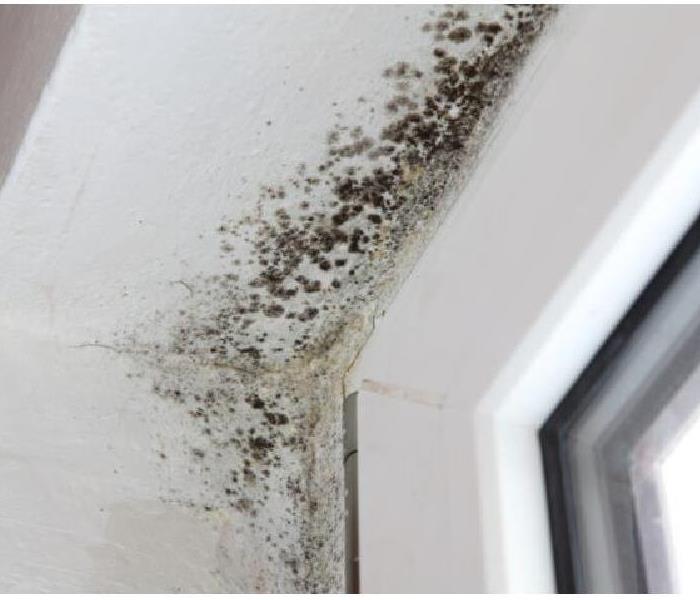 Mold can spread through a home in as little as 48 hours.
Mold can spread through a home in as little as 48 hours.
Microscopic mold spores naturally occur almost everywhere, both outdoors and indoors. This makes it impossible to remove all mold from a home or business. Therefore, mold remediation reduces the mold spore count back to its natural or baseline level. Some restoration businesses advertise “mold removal” and even guarantee to remove all mold, which is a fallacy. Consider the following mold facts:
- Mold is present almost everywhere, indoors and outdoors.
- Mold spores are microscopic and float along in the air and may enter your home through windows, doors, or AC/heating systems or even hitch a ride indoors on your clothing or a pet.
- Mold spores thrive on moisture. Mold spores can quickly grow into colonies when exposed to water. These colonies may produce allergens and irritants.
- Before mold remediation can begin, any sources of water or moisture must be addressed. Otherwise, the mold may return.
- Mold often produces a strong, musty odor and can lead you to possible mold problem areas.
- Even higher-than-normal indoor humidity can support mold growth. Keep indoor humidity below 45 percent.
If your home or business has a mold problem, we can inspect and assess your property and use our specialized training, equipment, and expertise to remediate your mold infestation.
If You See Signs of Mold, Call Us Today – 708-240-4873.
Things you should know about mold
1/27/2017 (Permalink)
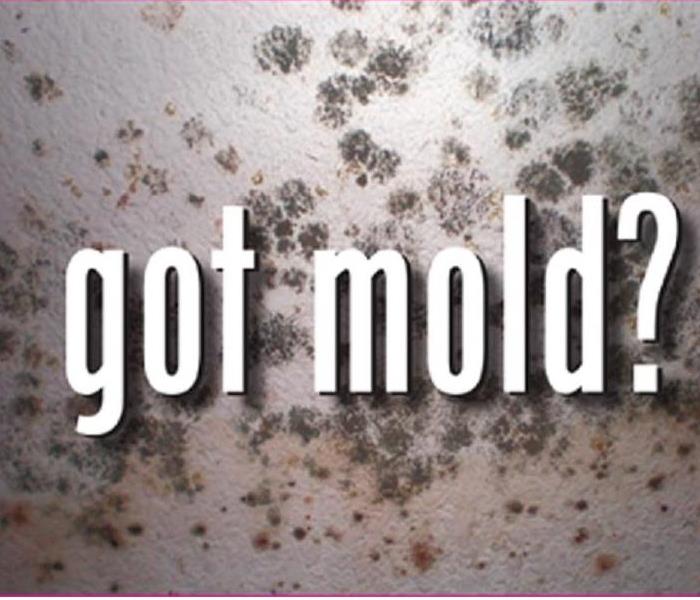
According to the EPA the ten things you should know about mold:
1. Potential health effects and symptoms associated with mold exposures include allergic reactions, asthma and other respiratory complaints.
2. There is no practical way to eliminate all mold and mold spores in the indoor environment; the way to control indoor mold growth is to control moisture.
3. If mold is a problem in your home or school, you must clean up the mold and eliminate sources of moisture.
4. Fix the source of the water problem or leak to prevent mold growth.
5. Reduce indoor humidity (to 30-60%) to decrease mold growth by:
• Venting bathrooms, dryers and other moisture-generating sources to the outside
• Using air conditioners and de-humidifiers
• Increasing ventilation
• Using exhaust fans whenever cooking, dishwashing and cleaning
6. Clean and dry any damp or wet building materials and furnishings within 24-48 hours to prevent mold growth.
7. Clean mold off hard surfaces with water and detergent, and dry completely. Absorbent materials such as ceiling tiles, that are moldy, may need to be replaced.
8. Prevent condensation: Reduce the potential for condensation on cold surfaces (i.e., windows, piping, exterior walls, roof, or floors) by adding insulation.
9. In areas where there is a perpetual moisture problem, do not install carpeting (i.e., by drinking fountains, by classroom sinks, or on concrete floors with leaks or frequent condensation).
10. Molds can be found almost anywhere; they can grow on virtually any substance, providing moisture is present. There are molds that can grow on wood, paper, carpet, and foods.
It is the water that you do not see that causes the most damage to your home and business. Water contains bacteria that can cause mold, rot, and other unseen damage.
Allergic reaction to mold are common, however, asthma attacks, skin and eye irritation, and coughing attacks are also common. Those with special health concerns should consult their doctor if they are concerned about mold exposure. Symptoms that may seem to occur from mold exposure may be due to other causes, such as bacterial or viral infections or other allergies.
In order to control mold, you have to control the moisture in a building. Once you detect water, acting promptly is the key to controlling mold. You need to get the water infiltration stopped and cleaned within 24-48 hours.
The IICRC (Institute of Inspection, Cleaning and Restoration Certification) gives several good tips on how to prevent mold.
• Repairing plumbing leaks and leaks in the building structure as soon as possible.
• Looking for condensation and wet spots. Fix source(s) of moisture incursion problem(s) as soon as possible.
• Preventing moisture from condensing by increasing surface temperature or reducing the moisture level in the air (humidity). To increase surface temperature, insulate or increase air circulation. To reduce the moisture level in the air, repair leaks, increase ventilation (if outside air is cold and dry), or dehumidify (if outdoor air is warm and humid).
• Keeping HVAC drip pans clean, flowing properly, and unobstructed.
• Performing regularly scheduled building/ HVAC inspections and maintenance, including filter changes.
• Maintaining indoor relative humidity below 70% (25 - 60%, if possible).
• Venting moisture-generating appliances, such as dryers, to the outside where possible.
• Venting kitchens (cooking areas) and bathrooms according to local code requirements.
• Cleaning and drying wet or damp spots as soon as possible, but no more than 48 hours after discovery.
• Providing adequate drainage around buildings and sloping the ground away from building foundations. Follow all local building codes.
• Pinpointing areas where leaks have occurred, identifying the causes, and taking preventive action to ensure that they do not reoccur.
It is impossible to rid your home or business of mold spores. Some mold spores can travel through the air and in dust, however if there is no moisture present, there can be no mold growth. Remember, if you clean up the mold, but do not fix the water problem, then the mold problem will continue to come back. That is where SERVPRO is here to help. Should you suspect mold in your home or business, contact our office at 708-240-4873.






 24/7 Emergency Service
24/7 Emergency Service
